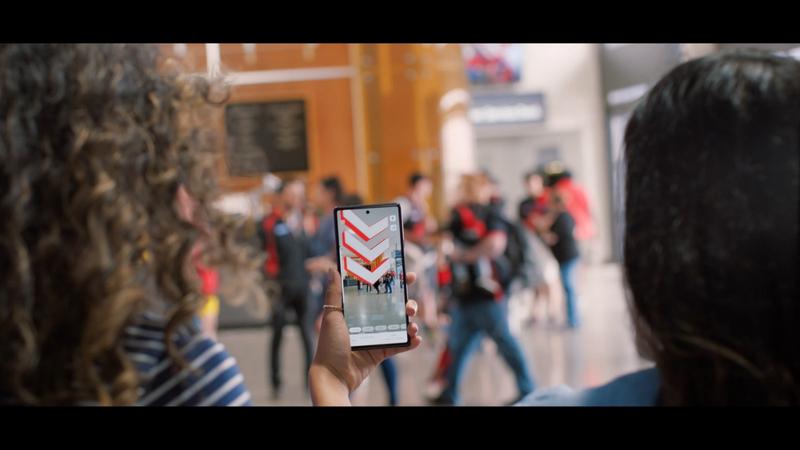
Telstra, Google and Accenture bring 5G enabled augmented reality to AFL – CMO Australia
Telstra has teamed up with Accenture and Google on a new augmented reality (AR)-based wayfinder experience for Melbourne’s Marvel Stadium ahead of the AFL’s 2023 season.
The experience is designed to showcase the capabilities of Telstra’s 5G network onsite as well as give fans and visitors the ability to use their mobile phones to navigate their way around the venue. To do this, the experience superimposes digital information onto the real-world environment using computer vision powered by Google’s ARCore Geospatial API. The new offering debuted at the Google I/O developers conference and is being delivered on Google Cloud.
The companies said Google trekker devices were used to develop the experience and create a metric model of Marvel Stadium representing the physical 3D world. GPS readings and environment scans were then matched with 360-degree images using the ARCore Geospatial API.This underpins the augmented reality capability. The technology hasn’t previously been used in an Australian sporting venue.
As well as indoor and venue wayfinding, users can also interact with content, digital character displays and virtual brand experiences onsite. Telstra said it’s working with the AFL and Marvel Stadium to launch the new AR wayfinding experience ahead of next year’s footy season.
“This collaboration with two major technology players marks another important step in our ambition to create one of the world’s most technologically advanced stadiums here in Australia. It will enable us to deepen our partnership with the AFL and deliver more immersive and innovative experiences for fans at Marvel Stadium,” Telstra Group executive products and technology, Kim Krogh Andersen, said.
“We are excited by the potential of this augmented reality experience and how our leadership in 5G can accelerate growth and value creation in other industries and settings such as hospitals, shopping centres and airports to improve the customer experience.”
Google Cloud VP Australia and New Zealand, Alister Dias, noted the potential to create more immersive and interactive experiences for fans. “This is only the beginning of how cloud-powered 5G AR wayfinding solutions can be used to enhance in-person experiences for all Australians,” he said.
“Visitors to Marvel Stadium can benefit from the ARCore GeoSpatial API to navigate their way to their seats, but beyond that, the immersive experience will continue through the App, pre-game AR shows, multi-user AR games, enhanced player analytics and performance statistics amongst other exclusive content,” Accenture managing director and A/NZ Communications, Media and Technology Group lead, Emma Neil, added. “In this newly emerging metaverse continuum, the potential for immersive and dynamic fan experiences is enormous.”
The latest offering comes off the back work Telstra has been doing with the AFL to evolve the stadium experience. This includes the 5G upgrade and using artificial intelligence (AI), in-stadium streaming and on-field player performance tracking to enhance onsite experiences.
“This Augmented Reality wayfinding application is a great example of using the power of the partners the AFL has to deliver something to our fans that elevates their game day experience,” AFL executive general manager customer and commercial, Kylie Rogers, said.
It’s not the first time 5G and AR have been employed across an Australian sporting experience. Last October, rival telco, Optus, worked with the Western Australian Football League during its grand final on an AR fuelled, in-stadium experience allowing fans of the game to create a lifelike avatar of themselves donning their favourite team’s kit and colours. To do this, consumers scanned a QR code and took a quick selfie, which was then transformed into the avatar. The digital characters could be shared via social media channels, and those at the game also had the ability to upload a photo of friend if they weren’t in attendance.
This content was originally published here.



